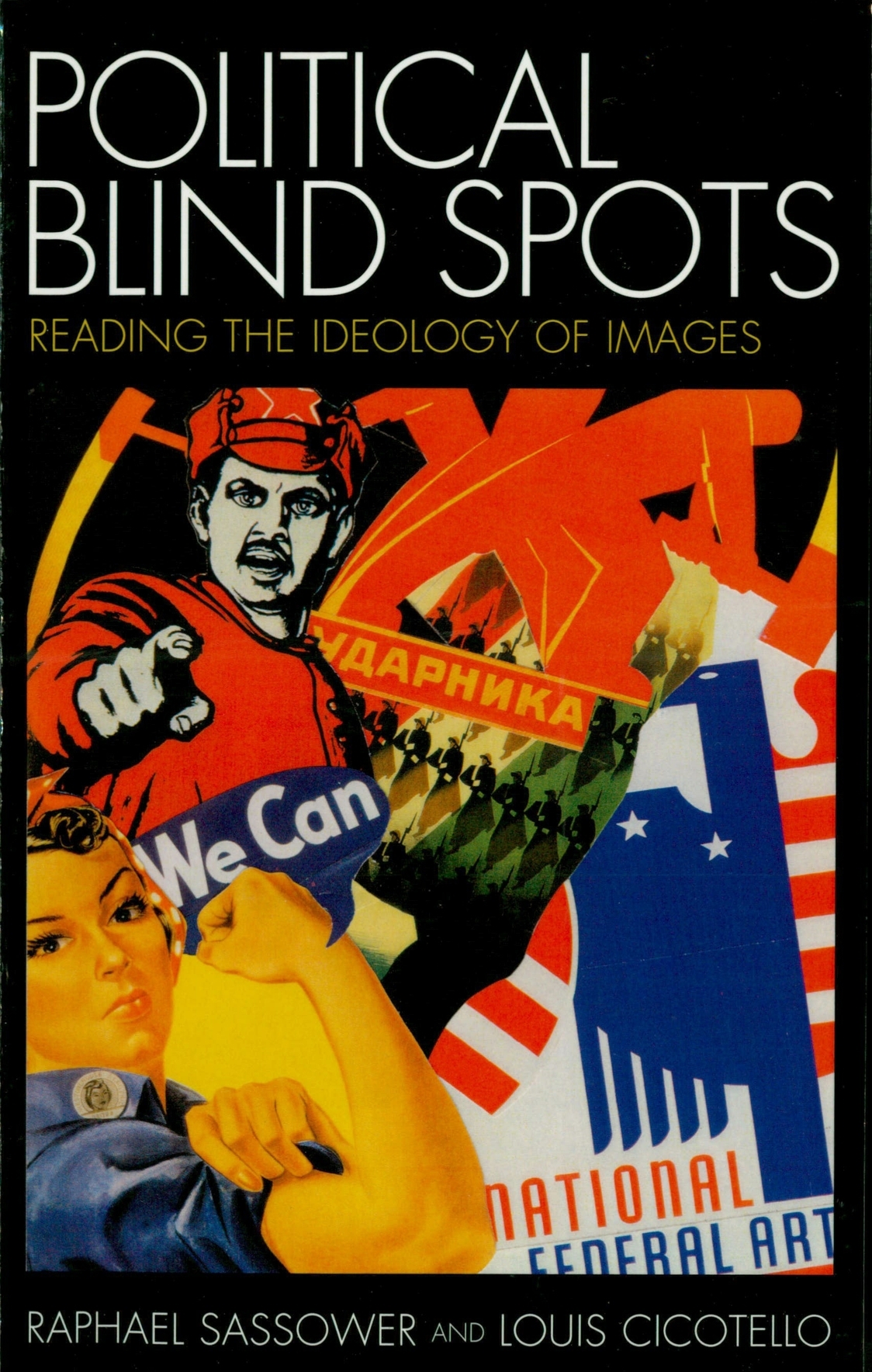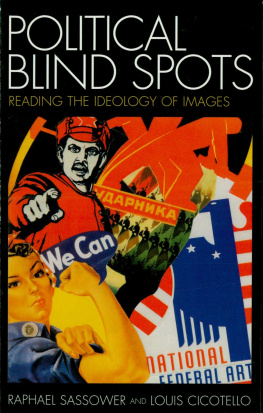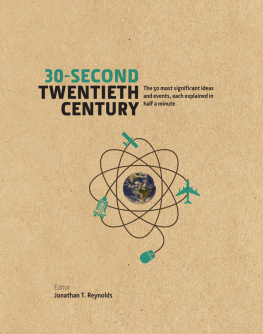Raphael Sassower - Political Blind Spots: Reading the Ideology of Images
Here you can read online Raphael Sassower - Political Blind Spots: Reading the Ideology of Images full text of the book (entire story) in english for free. Download pdf and epub, get meaning, cover and reviews about this ebook. year: 2006, publisher: Lexington Books, genre: Politics. Description of the work, (preface) as well as reviews are available. Best literature library LitArk.com created for fans of good reading and offers a wide selection of genres:
Romance novel
Science fiction
Adventure
Detective
Science
History
Home and family
Prose
Art
Politics
Computer
Non-fiction
Religion
Business
Children
Humor
Choose a favorite category and find really read worthwhile books. Enjoy immersion in the world of imagination, feel the emotions of the characters or learn something new for yourself, make an fascinating discovery.
- Book:Political Blind Spots: Reading the Ideology of Images
- Author:
- Publisher:Lexington Books
- Genre:
- Year:2006
- Rating:5 / 5
- Favourites:Add to favourites
- Your mark:
- 100
- 1
- 2
- 3
- 4
- 5
Political Blind Spots: Reading the Ideology of Images: summary, description and annotation
We offer to read an annotation, description, summary or preface (depends on what the author of the book "Political Blind Spots: Reading the Ideology of Images" wrote himself). If you haven't found the necessary information about the book — write in the comments, we will try to find it.
Political Blind Spots: Reading the Ideology of Images — read online for free the complete book (whole text) full work
Below is the text of the book, divided by pages. System saving the place of the last page read, allows you to conveniently read the book "Political Blind Spots: Reading the Ideology of Images" online for free, without having to search again every time where you left off. Put a bookmark, and you can go to the page where you finished reading at any time.
Font size:
Interval:
Bookmark:

Raphael Sassower is professor and chair of philosophy at the University of Colorado, Colorado Springs. He is the author most recently of Confronting Disaster: An Existential Response to Technoscience (Lexington Books 2004), and with Louis Cicotello The Golden Avant-Garde: Idolatry , Commercialism , and Art (Virginia 2000). His research focus is on postmodern technoscience as it relates to a variety of cultural areas, such as aesthetics, pedagogy, and medicine.
Louis Cicotello is professor and former chair of visual and performing arts at the University of Colorado, Colorado Springs. In addition to collaborating with Raphael Sassower on The Golden Avant-Garde, he has been a prolific visual artist, exhibiting collages, assemblages, theatrical sets, and sculptures nationwide. His artworks exemplify the artistic predicament of cultural critique. The collage for the cover of this book was designed by him.
Adorno, Theodor W. 1994. Anti-Semitism and Fascist Propaganda, in Adorno: The Stars Down to Earth. Edited by Stephen Crook. London and New York: Routledge, 135-61.
Bell, Daniel. 1961. The End of Ideology: On the Exhaustion of Political Ideas in the Fifties. New York: Collier Books.
Berger, John. 1972. Ways of Seeing . London: Penguin.
Bogart, Michele H. 1995. Artists , Advertising, and the Borders of Art Chicago and London: The University of Chicago Press.
Boime, Albert. 1991. The Magisterial Gaze: Manifest Destiny and American Landscape Painting c. 18301865. Washington, DC: The Smithsonian Institution Press.
Buck-Morss, Susan. 1995. Envisioning Capital: Political Economy on Display, in Visual Display: Culture Beyond Appearances . Edited by Lynne Cooke and Peter Wollen, 111-153. Seattle: Bay Press.
Carroll, Noel. 2004. Art and Human Nature. The Journal of Acsthetics and Art Criticism 62, no. 2: 95-107.
Chomsky, Noam. 2000. New Horizons in the Study of Language and the Mind. Cambridge: Cambridge University Press.
Clifford, James. 1988. The Predicament of Culture: Twentieth-Century Ethnography, Literature , and Art . Cambridge and London: Harvard University Press.
Cohen, Carl, ed. 1972/1962. Communism, Fascism , and Democracy: The Theoretical Foundations . New York: Random House.
. 1982. Four Systems: Individualist Democracy, Socialist Democracy, Fascism, Communism. New York: Random House.
Craven, David. 1997. Diego Rivera as Epic Modernist. New York: G. K. Hall.
Dahl, Robert. 2003. How Democratic is the American Constitution? 2nd ed. New Haven: Yale University Press.
de Sousa, Ronald. 2004. Is Art Adaptation? Prospects for an Evolutionary Perspective on Beauty. The Journal of Aesthetics and Art Criticism 62, no. 2: 10918 .
Dewey, John. 1958. Art as Experience. New York: Capricon Books.
Downs, Linda, ed. 1986. Diego Rivera: A Retrospective. New York: W. W. Norton.
Eagleton, Terry. 1990. The Ideology of the Aesthetic. Oxford and Cambridge, MA: Basil Blackwell.
. 1991. Ideology: An Introduction. London and New York: Verso.
Fauehereu, Serge, ed. 1988. Moscow: 19001930. New York: Rizzoli.
Fiedler, Jeannine, and Peter Feierabend, eds. 1999. Bauhaus. Cologne: Kone-mann.
Fischer, Ernst. 1959. The Necessity of Art. Middlesex: Penguin Books.
Freire, Paulo. 1970. Pedagogy of the Oppressed. Translated by Myra Bergman Ramos. New York: Herder and Herder.
Gibson, J. J. 1966. The Senses Considered as Perceptual System. Boston: Houghton Mifflin.
Gombrich, Ernest. 1961. Art and Illusion. Princeton: Princeton University Press.
Goodman, Nelson. 1976. Languages of Art. Indianapolis: Hackett.
Guptill, Arthur L. 1946. Norman Rockwell: Illustrator. New York: Watson-Guptill.
Hanson, Norwood R. 1958. Pasterns of Discovery. Cambridge: Camhridge University Press.
Hahn, Peter. 2002. Bauhaus: 19791933. Koln: Twchen (Bauhaus-Archiv Museum).
Horkheimer, Max, and Theodor W. Adorno. 2002. Dialectic of Enlightenment: Philosophical Fragments. Edited by Gunzelin Schmid Noerr and translated by Edmund Jephcott. Stanford: Stanford University Press.
Josephson, Susan G. 1996. From Idolatry to Advertising: Visual Art and Contemporary Culture. London: M. E. Sharpe.
Lewontin, R. C. 1991. Biology as Ideology: The Doctrine of DNA. New York: HarperCollins.
Macpherson, C. B. 1962. The Political Theory of Possessive Individualism. London, Oxford, New York: Oxford University Press.
Marling, Karal Ann. 1997. Norman Rockwell. New York: Harry N. Abrams.
Marx, Karl. 1988. The Communist Manifesto [1872]. Edited by Fred Bender. New York: W. W. Norton.
Menen, Aubrey. 1980. Art & Money: An Irreverent History. New York: McGraw-Hill.
Neurath, Otto. 1973. Empiricism and Sociology. Edited by Marie Neurath and Robert S. Cohen. Dodrecht and Boston: Reidel, (especially chapter 7).
Paxton, Robert O. 2005. The Anatomy of Fascism. New York: Vintage.
Pound, Ezra. 1996. Machine Art & Other Whitings: The Lost Though of the Italian Years. Durham, NC: Duke University Press.
Rockwell, Norman. 1979. Norman Rockwell: My Adventures as an Illustrator. Indianapolis: Curtis Publishing Co.
Rosenberg, Donna. 1994. World Mythology. New York: McGraw-Hill.
Sassower, Raphael, and Louis Cicotello. 2000. The Golden Avant-Garde. Charlottesville: University of Virginia Press.
Thau Heyman, Therese. 1998. Posters: American Style. New York: Harry N. Abrams.
Timmers, Margaret, ed. 1998. The Power of the Poster. London: V&A Publications.
Walton, Donald. 1978, A Rockwell Portrait: An Intimate Biography. Kansas City: Sheed, Andrews, and McMeel.
White, Stephen. 1988. The Bolshevik Poster. New Haven: Yale University Press.
Whitford, Frank. 1984. Batthaus. London: Thames & Hudson.
Wittgenstein, Ludwig. 1922. Tractatus Logico-Philosophicus. London: Routledge & Kegan Paul.
. 1958. Philosophical Investigations. Translated by G. E. M. Anscombe. New York: Macmillan.
W e should admit from the outset that aesthetic expression is an expression of something, a viewpoint, an idea, a taste. As such, artists dont work in an intellectual vacuum, no mater how loath they are to discuss their ideas or their ideological commitments. Moreover, whatever is produced and labeled as works of art is undertaken within a certain economic, social, and political context that becomes clear once analysis is allowed. This critical perspective has become evident to the public since John Berger, for example, delivered a series of lectures with accompanying visual representations on BBC (eventually turned into a best-selling book). In it, Berger argues convincingly that even the oil paintings of the Renaissance embodied a bourgeois conviction not only because of the subject matter and the particular expensive medium in which it was delivered, but that a whole set of material conditions and ideological prejudices went into this process of aesthetic consumption. For example, Berger focuses on the male gaze of nude female images as a way of objectifying them and possessing them in ones private chambers. In going through this analysis, Berger shifts art history and art appreciation into a lesson in the politics of aesthetics uncovering (or revealing) or the ideological foundation against which judgment and choice must be made.
Ingress highly detailed oil painting The Grande Odalisque, featuring a nude female sumptuously on display for male pleasure, is exactly an image of consumption that Berger points to in his critique. Illustration 4, the Guerrilla Girls poster Do Women have to be naked to get into the Met. Museum? of 1989, draws on the fine art of Ingress nude as a source for its composition as a strategy typical of many advertising images. The Guerrilla Girls art makes a witty reversal of the politics of those kinds of images as their text from a feminist viewpoint. They mock the exclusive domains of museums and galleries, where male gatekeepers wish to interact with women only as objectified nude images readily available for consumption. More specifically, the posters were displayed on walls outside the museum only to remind the public that their own posters and flyers and other graphic materials were excluded from a show of political posters called Committed to Print at the Museum of Modern Art, ironically on the grounds that what they did wasnt art but politics, (Timmers 199899). The Guerrilla Girls fight the sexism and racism that dominate the art world, and they have been punished for their outspoken critique, as for example, when their poster (listed above) that was originally intended to be part of a billboard series sponsored by the Public Art Fund in New York City was eventually rejected. It was subsequently self-funded for public display on buses and streets by this anonymous group of women artists.
Font size:
Interval:
Bookmark:
Similar books «Political Blind Spots: Reading the Ideology of Images»
Look at similar books to Political Blind Spots: Reading the Ideology of Images. We have selected literature similar in name and meaning in the hope of providing readers with more options to find new, interesting, not yet read works.
Discussion, reviews of the book Political Blind Spots: Reading the Ideology of Images and just readers' own opinions. Leave your comments, write what you think about the work, its meaning or the main characters. Specify what exactly you liked and what you didn't like, and why you think so.









